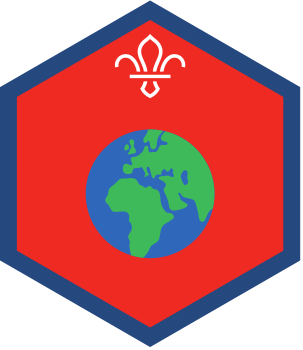Flying high
You’ll need
A Scout’s Own is an inspirational, informal ceremony that often lasts about 15 minutes. They’re made up of a mixture of readings, reflections and music.
This is just one example of how to have a Scout’s Own. There are lots of different themes, topics, and activities to choose from. When you’re planning a Scout’s Own think about including elements such as an opening, reading, activity, music, and closing. We’ve included some more information on these (and some other things to consider) to help.
Opening
- Everyone should gather together in a circle. The person leading the activity should explain that everyone’s going to take part in a special ceremony called a Scout’s Own. A Scout’s Own is a time for people to think and reflect together.
- The person leading the activity should ask people to think about what it means to work as a team and help other people. Everyone should close their eyes, and think about a time they’ve been part of a team.
Reading and activity
- The person leading the activity should explain that some geese migrate with the seasons, which mean they move between different places in summer and winter. They can fly up to 3,000 miles for their migration, so they need a lot of energy and some clever tactics.
- The person leading the game should ask some people to volunteer to help them tell the story of the geese.
- The volunteers should stand in a ‘V’ shape, with one person at the front as the point of the ‘v’. They’re now geese. They should stand still, but gently flap their wings as they fly high in the sky.
- The person leading the activity should point to the lead goose, and explain that they create something called uplift as they flap their wings. Their uplift makes it easier for the two geese behind them to fly. Their uplift makes it easier for the geese behind them, and so on. Because it’s easier to fly, the geese can fly further than they could if they just flew side by side in a straight line.
- The person leading the activity should explain that the geese at the front doesn’t get uplift from any other geese, so they get tired faster. The lead goose should show everyone how tired they are.
- The person leading the activity should explain that when they lead goose gets too tired, they go to the back of the ‘V’ formation, and someone else takes over. The lead goose should go to the back, another goose should take over, and all of the geese should honk loudly to encourage their friends.
- The person leading the activity should explain that if a goose can’t fly, for example if they’re poorly, they’ll land, and two other geese will also land and stay with them until they feel better. Three of the geese should act this out—the poorly goose could pretend to have a sore wing or a headache.
- All of the geese should move around the space in their V formation, working together and taking it in turns to be the lead goose, the poorly goose, and the geese taking care of the poorly goose.
Music and closing
- Everyone should sit back in a circle. The person leading the activity could put some music on to help everyone calm down and think.
- Everyone should think about how the geese worked as a team. They took it in turns to do the hardest job as lead goose, made sure no one got left behind, and supported each other with encouraging honking. This is just like Scouts, where we make a Promise to help other people.
- Everyone should think about everyday ways they could support people, perhaps in their family or their class at school. How could they be like a goose and share the hard work, make sure no one’s left out, or encourage others?
Reflection
This activity helped you develop your beliefs. Do you think it’s important to work as a team? Why? When we work together we can achieve more than if we work on our own. How does it feel to spend time reflecting on what you think and believe?
This activity also helped you to care. Everyone should think of different groups they belong to—these could include classes at school, families, and sports teams. How do you like to be treated by these groups? We usually like it when people show they care, when they’re helpful and kind, and when they’re friendly. The geese were really good at showing they cared for other people—what did they do? What could you do to show that you care for others? It’s part of the Beaver Scout Promise to be ‘kind and helpful’.
Safety
All activities must be safely managed. You must complete a thorough risk assessment and take appropriate steps to reduce risk. Use the safety checklist to help you plan and risk assess your activity. Always get approval for the activity, and have suitable supervision and an InTouch process.
Everyone should be able to take part as a goose in the ‘V’ formation. The geese could sit on chairs, and you can adapt the actions and movement to work for everyone.
If anyone struggles with attention, you may want to chat to them and their parents and carers before you begin to find some strategies to help.
All Scout activities should be inclusive and accessible.
You could use this activity to introduce or reflect on the Teamwork Challenge Award. Why not run it as part of a bigger set of teamwork themed activities and games, whether you’re in a regular meeting or on a camp?
Young people should lead the discussion and give examples.

